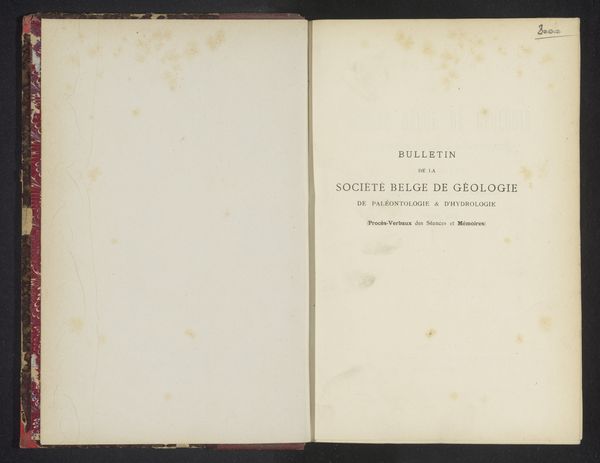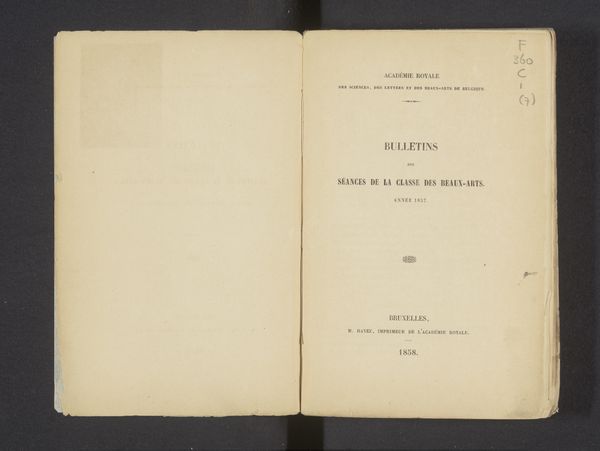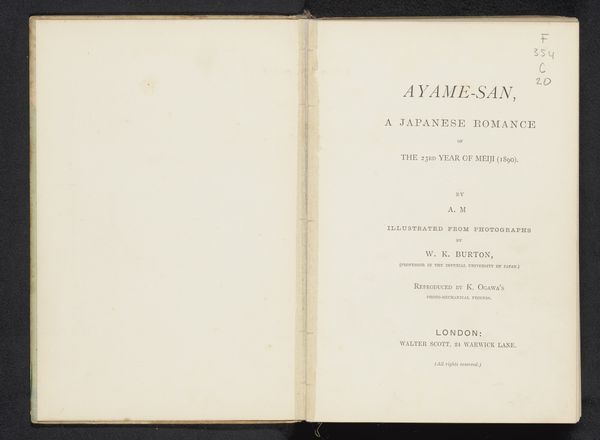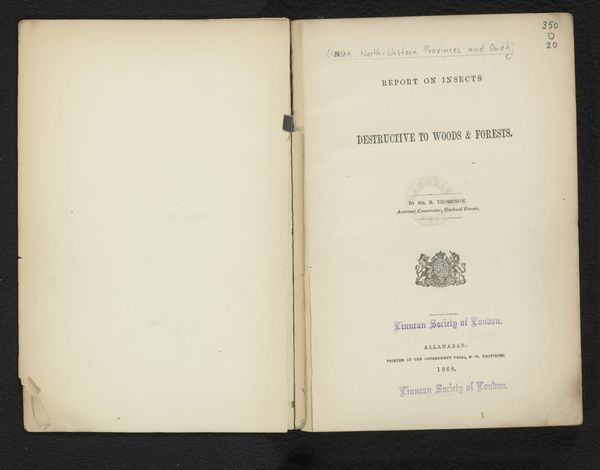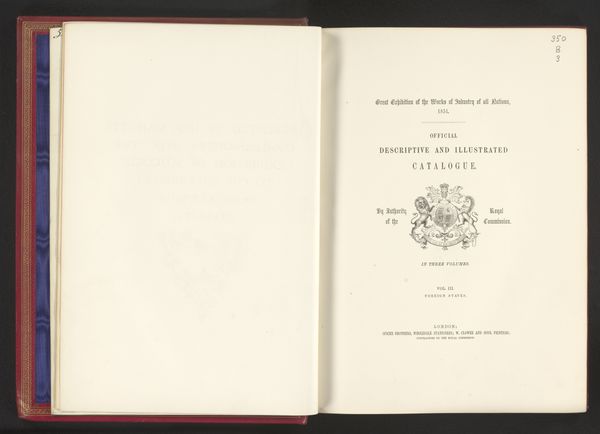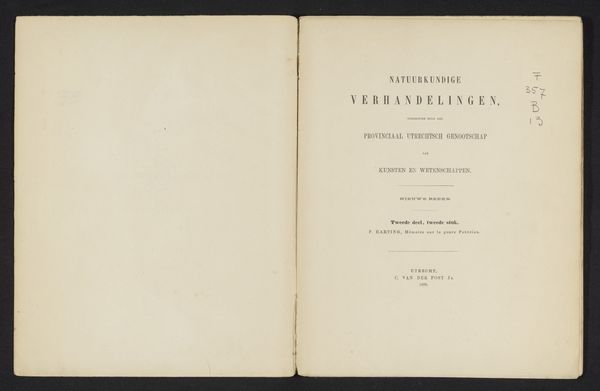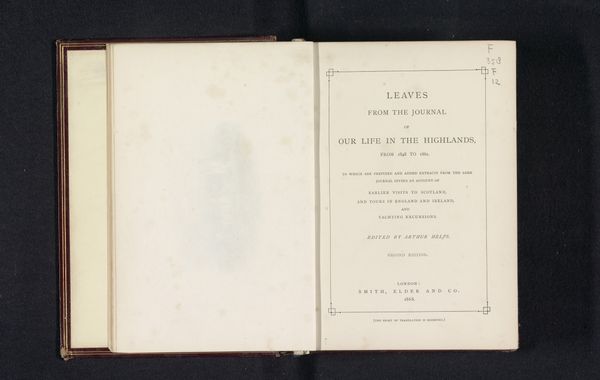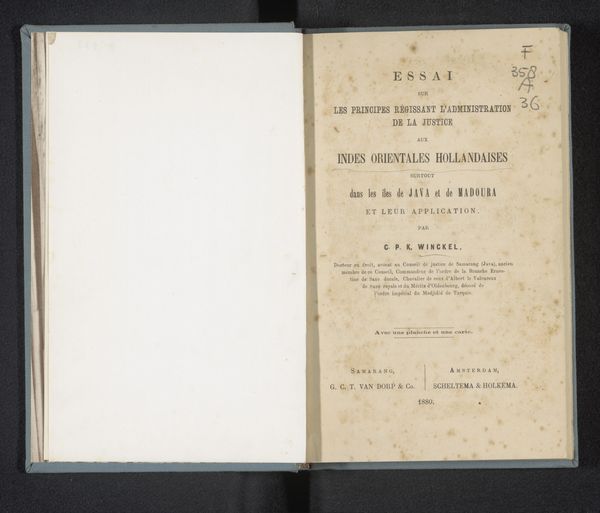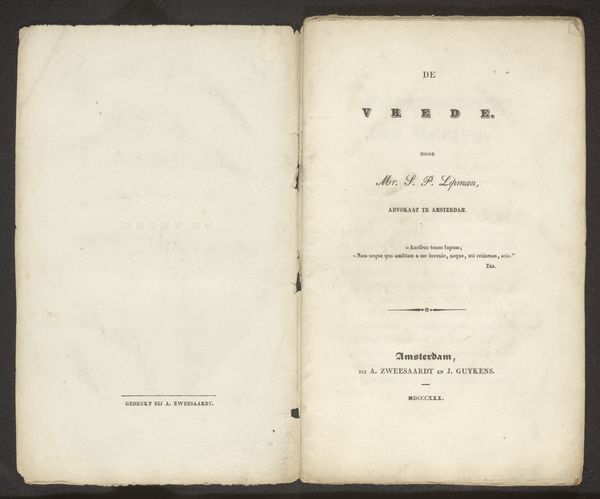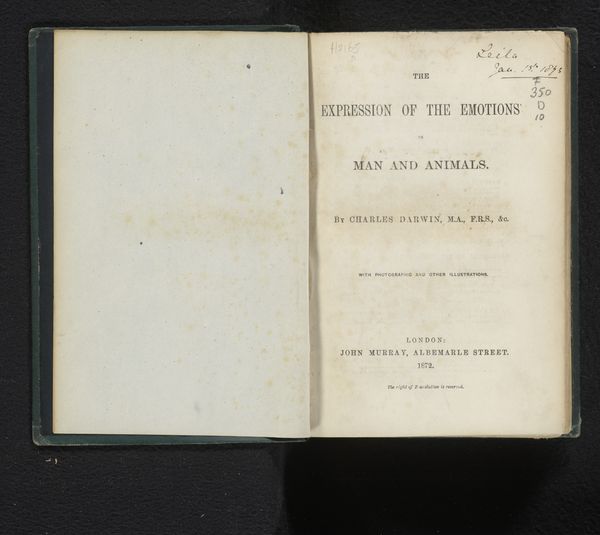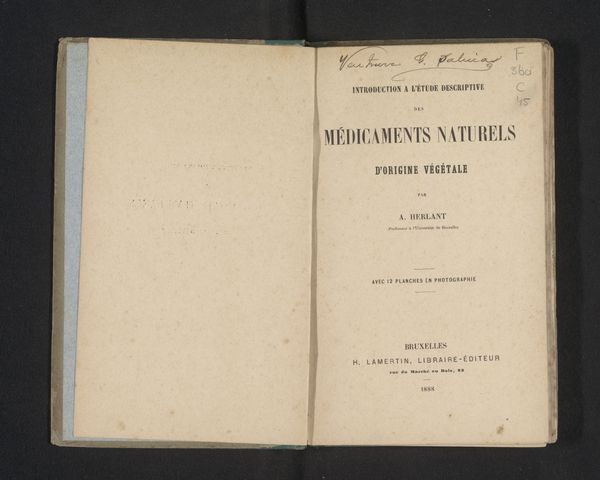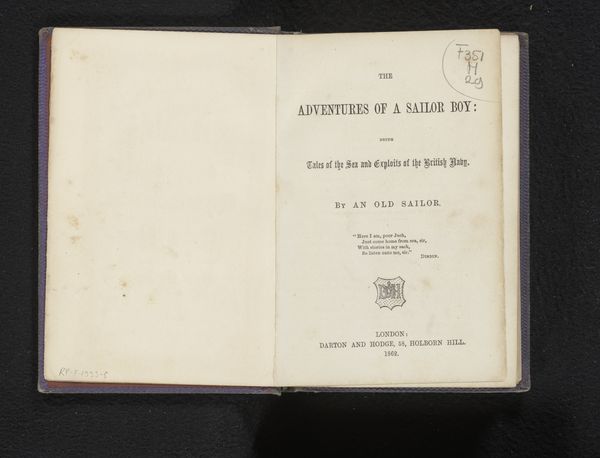
Souvenirs de douleur et pieux souvenirs / par Mme. Ve. Lebrocquy, née D'Haeyere 1863
0:00
0:00
graphic-art, print, paper, typography
#
graphic-art
# print
#
paper
#
typography
Dimensions: height 225 mm, width 155 mm, thickness 10 mm
Copyright: Rijks Museum: Open Domain
Curator: Looking at this spread, I immediately get a sense of restrained grief, it feels intimate and carefully presented. Editor: Yes, the somber yet elegant typography does create a feeling of profound intimacy. We're looking at the title page of "Souvenirs de douleur et pieux souvenirs" or "Memories of Pain and Pious Memories," by Mme. Ve. Lebrocquy, née D'Haeyere, created in 1863. Curator: As a materialist, I’m drawn to the production of this piece; the method and means of its manufacture would tell me a lot. I'm curious about the paper itself; it seems fairly simple. Was it a costly paper stock for the time? How would that reflect on Lebrocquy’s social standing and access to resources for commemorative publishing? Editor: Exactly. Think about the cultural context, too: a woman artist self-publishing a commemorative book within a family, especially in the nineteenth century, tells us a great deal. How often were women given space to be recognized beyond the domestic sphere? What narrative could this tell us about the space that mourning took up in people's everyday lives? Curator: I'm looking closely at that small vignette under the author’s name – the skull and cross. What details are included, and how detailed? Are we intended to view that as high art, or craft production? Editor: I see it as both! Death rituals, particularly when meticulously rendered as artwork and memorialized through typography and printed dissemination, served crucial societal purposes during this period, blending private grief with public acknowledgment. It highlights how craft practices – writing, printmaking, even the crafting of personal memory books - can become powerful ways to record experience and promote communal healing. Curator: And consider what type of printer created this. We have an attribution for printing. What was the shop known for, who worked there, and was Lebrocquy paying someone to produce this? Editor: Those details would offer us a clear look into its manufacturing context, which informs how accessible a work like this was to the wider population, as well as her relationships and connections to the printer to see how gender might have played a role. Curator: Fascinating. Looking at it simply as a material object gives just a single vantage. Editor: Right. Seeing the social fabric it was made from adds layers. Grief is layered, identity is layered. Together, we get a more holistic and meaningful interpretation.
Comments
No comments
Be the first to comment and join the conversation on the ultimate creative platform.
